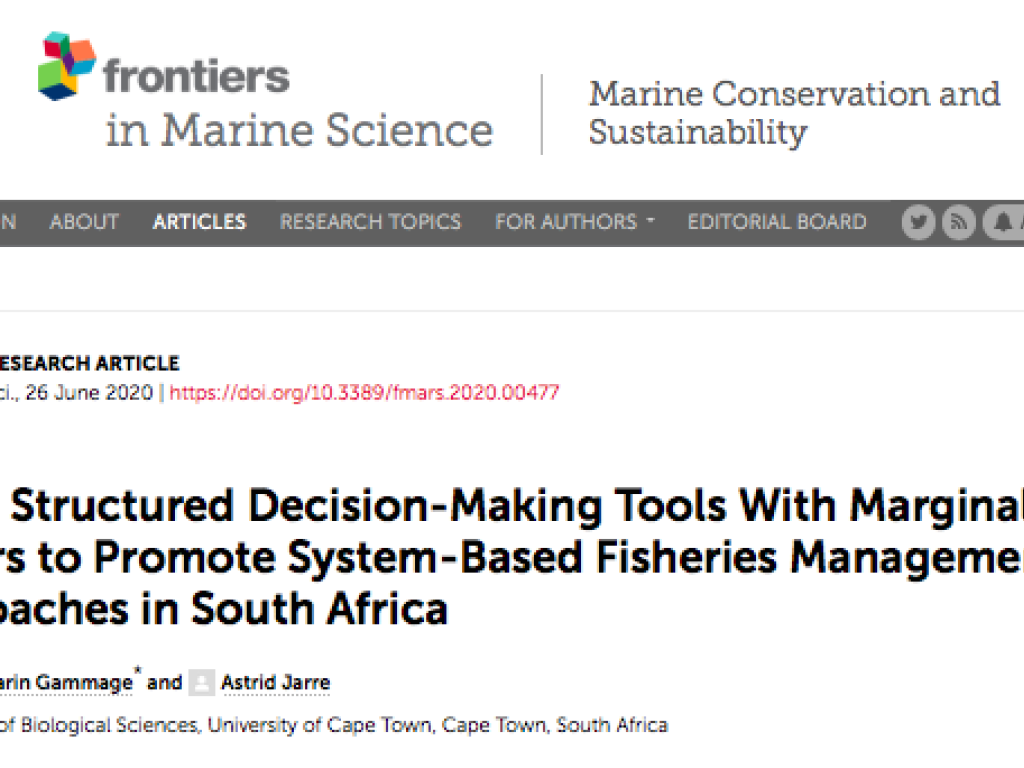Just out: “Using structured decision-making tools with marginalised fishers to promote systems-based fisheries management approaches in South Africa”

Congratulations to Louise who has just got the second paper from her PhD published in Frontiers for Marine Science. She gives us a quick overview here:
Marine social-ecological systems (SESs) are inherently complex. Anthropogenic pressures – such as climate change and overfishing - add to this complexity. This results in fishers, their communities and decision-makers (such as fisheries managers), struggling to make proactive, informed decisions, which undermine long-term sustainability. The question that needs answering is how can we build capacity at various decision-making scales so that fishers can locally apply risk aversion strategies while providing managers with the information required to understand SES interactions and apply inclusive management approaches such as the ecosystem approach to fisheries management (EAF)? At the same time, the effective implementation of an EAF requires that multiple stakeholders, disciplines and objective be included in decision-making processes. Through this paper, we seek to address some of these broad challenges associated with building adaptive capacity at the small-scale whilst developing an approach that can facilitate the practical implementation of an EAF in South Africa. We do this by prototyping an interactive and interactive scenario-based approach which makes use of structured decision-making tools (SDMTs) – namely causal mapping, weighted hierarchies and Bayesian belief networks (BBN).
This research builds on previous research that was carried out in South Africa’s southern Cape linefishery where we identified drivers of change in the SES. Using causal mapping, we asked fishers from four southern Cape towns – Mossel Bay, Bitouville, Melkhoutfontein and Slangrivier – to map out the drivers of changes in an iterative problem framing exercise which also highlighted hidden feedback loops and indirect drivers of change, thereby facilitating a more integrated and holistic systems view. To explore the relative importance of some of the key drivers with participants, we developed weighted hierarchies and BBNs with fishers from Melkhoutfontein. The drivers identified in the weighted hierarchy were consistent with those in the causal maps and the previous research and of importance here, was the relative weighting attributed to the drivers. While the weighted hierarchies emphasised the political dimensions that drive change, group discussions highlighted a range of perceptions – indicative of the uncertainty in this SES. The BBN process followed an individual approach, yielding a better reflection of the diversity of views and a better balance between the political, economic and climate dimensions driving change. Here we show how, by using SDMTs, we can engage with the most disenfranchised members of our communities in structured processes. This is an important finding as structure is crucial (and central) to management processes. In this paper we show, that when the right groundwork, capacity building and resourcing takes place, we can integrate disenfranchised stakeholders into formal management processes, thereby fulfilling an important EAF requirement.
Find the paper and appendices [here].